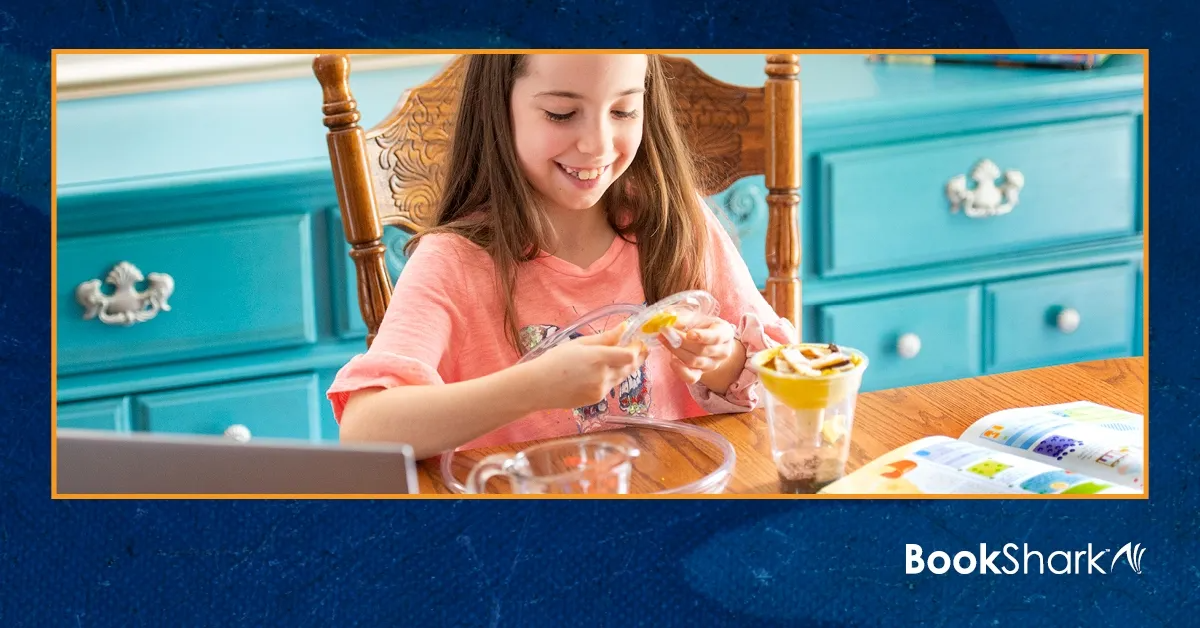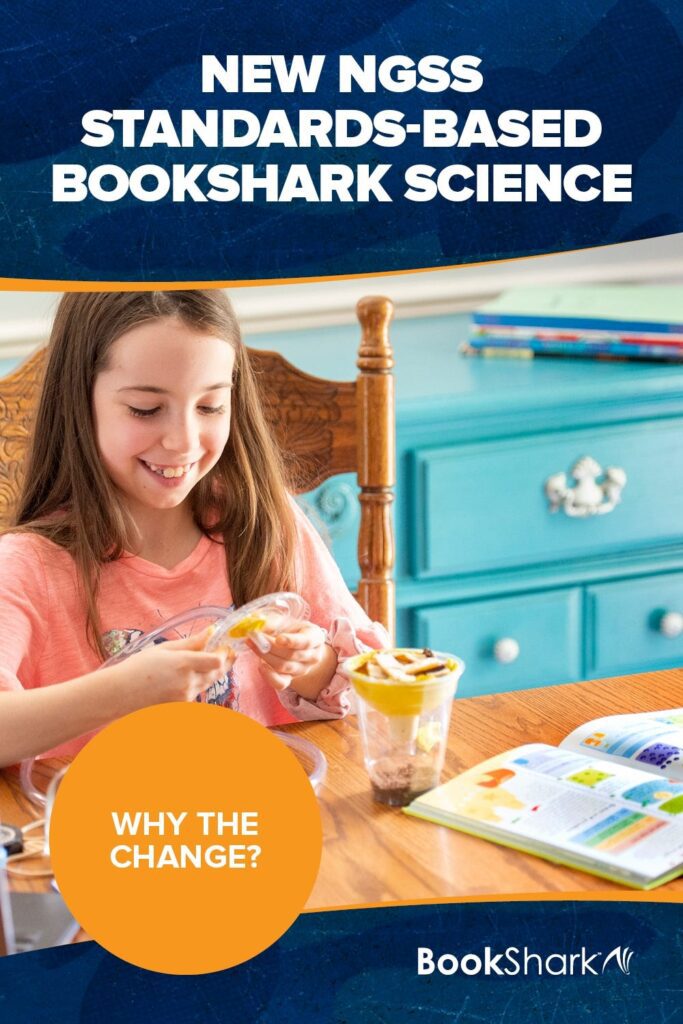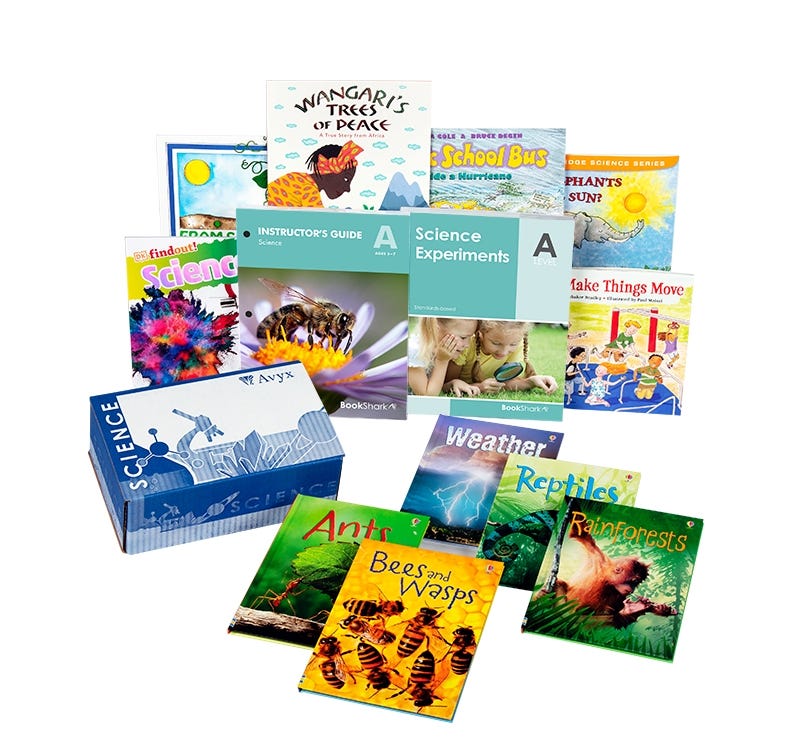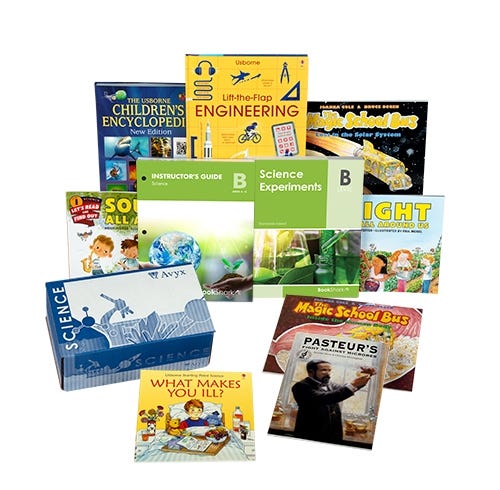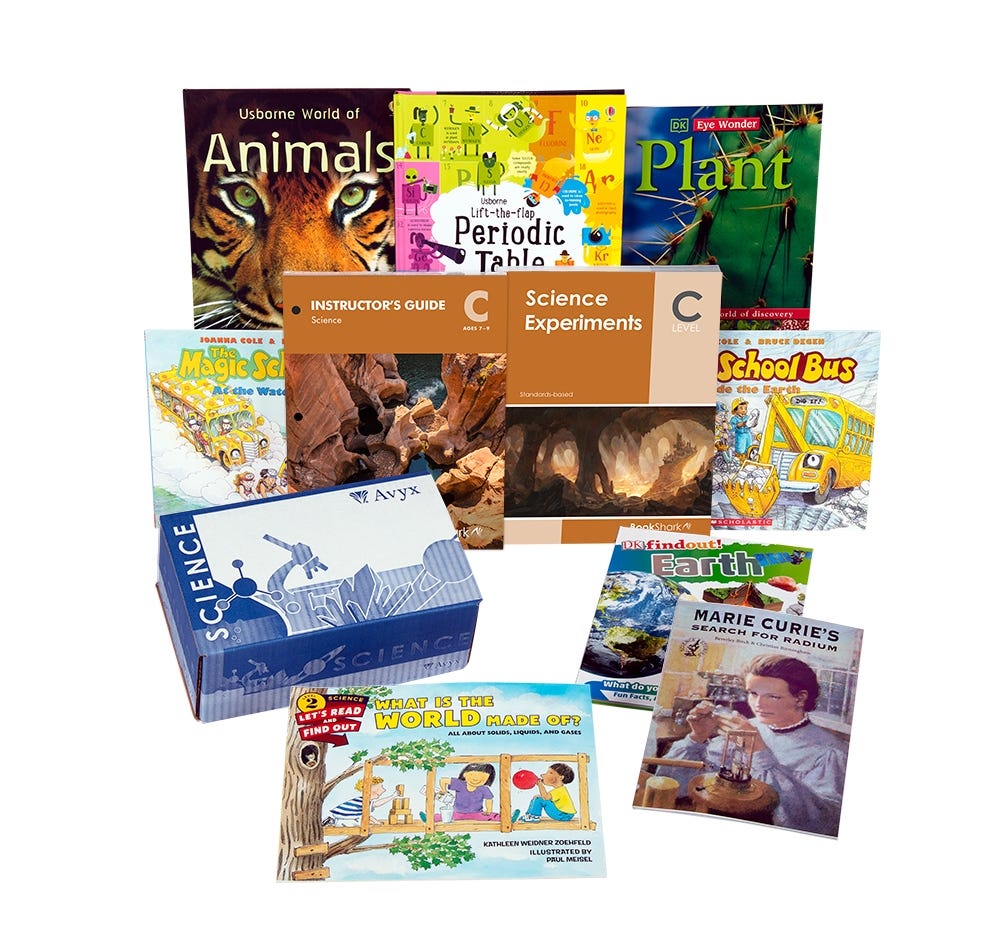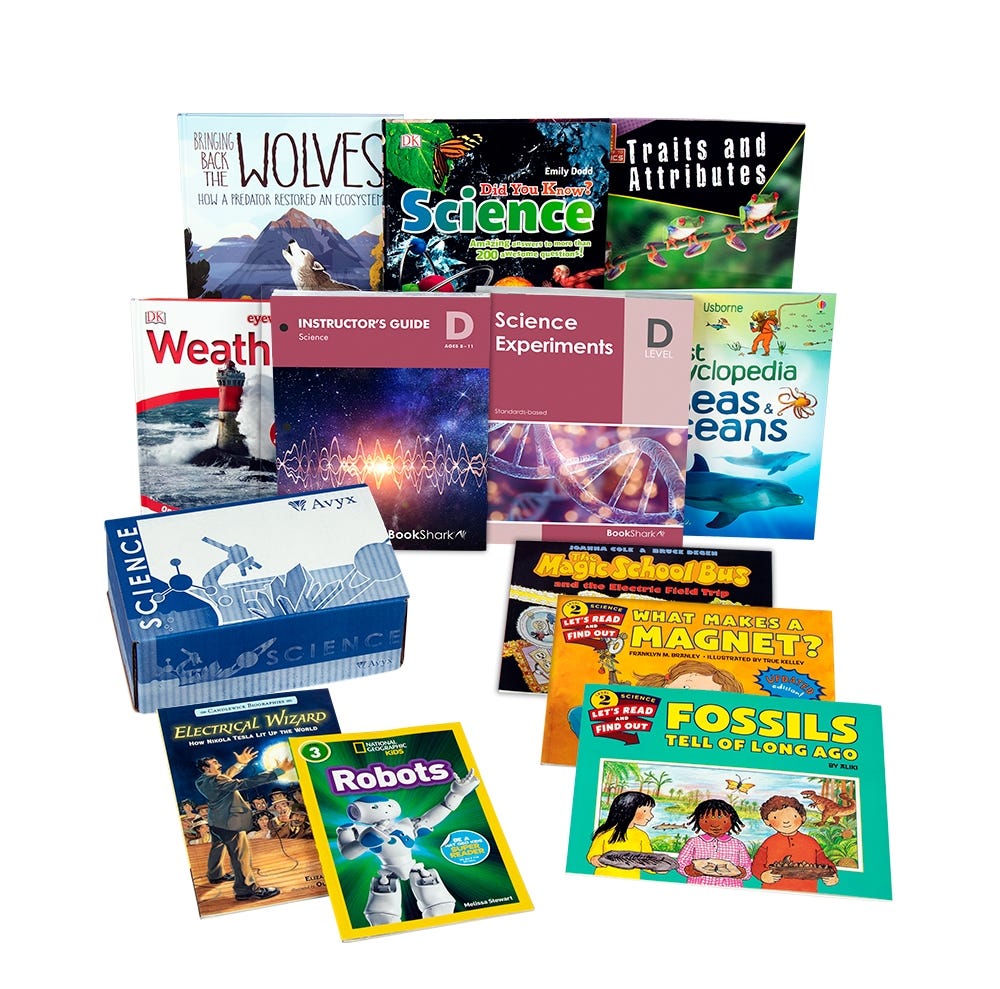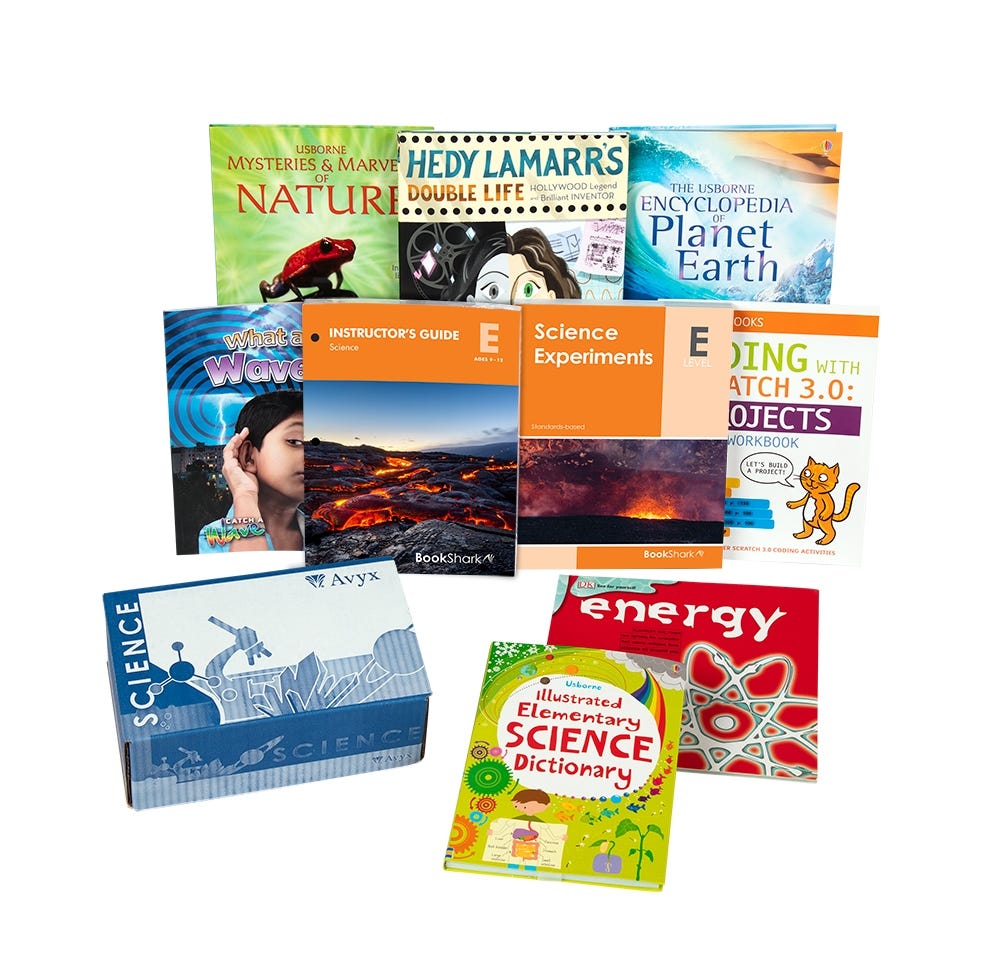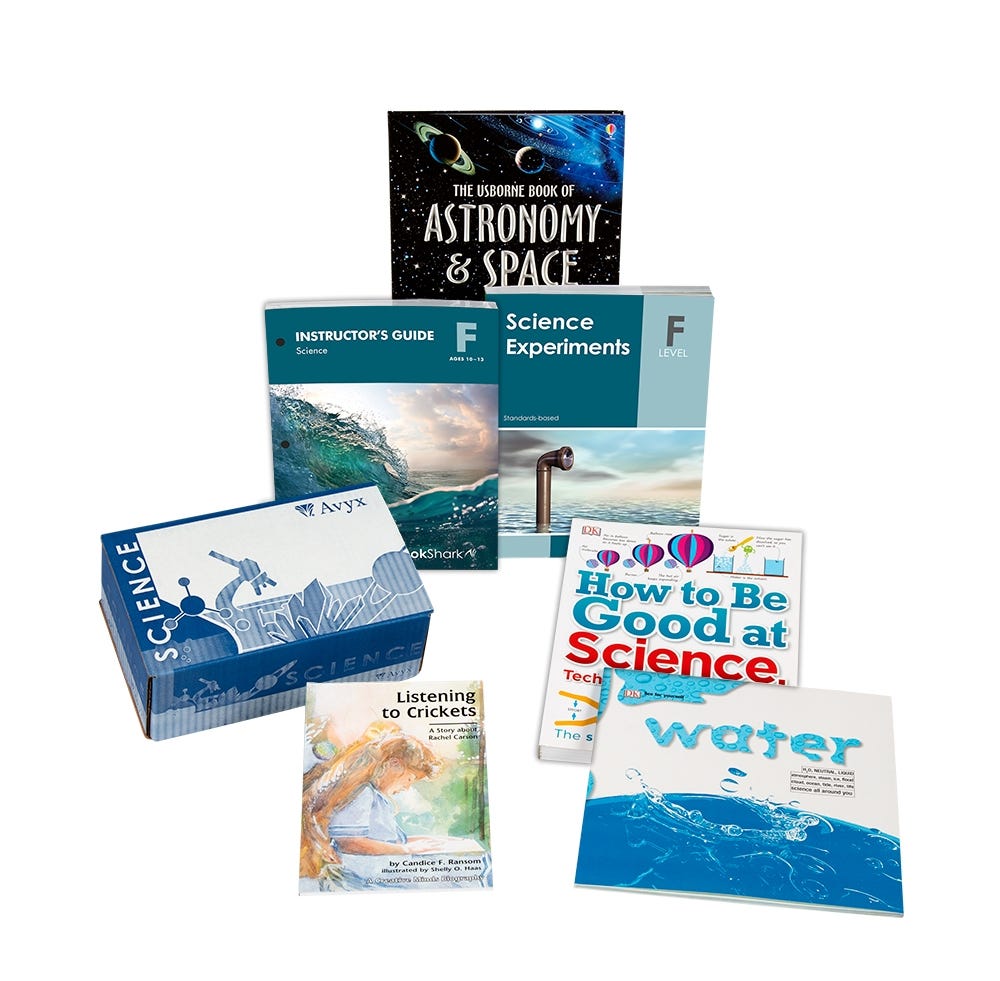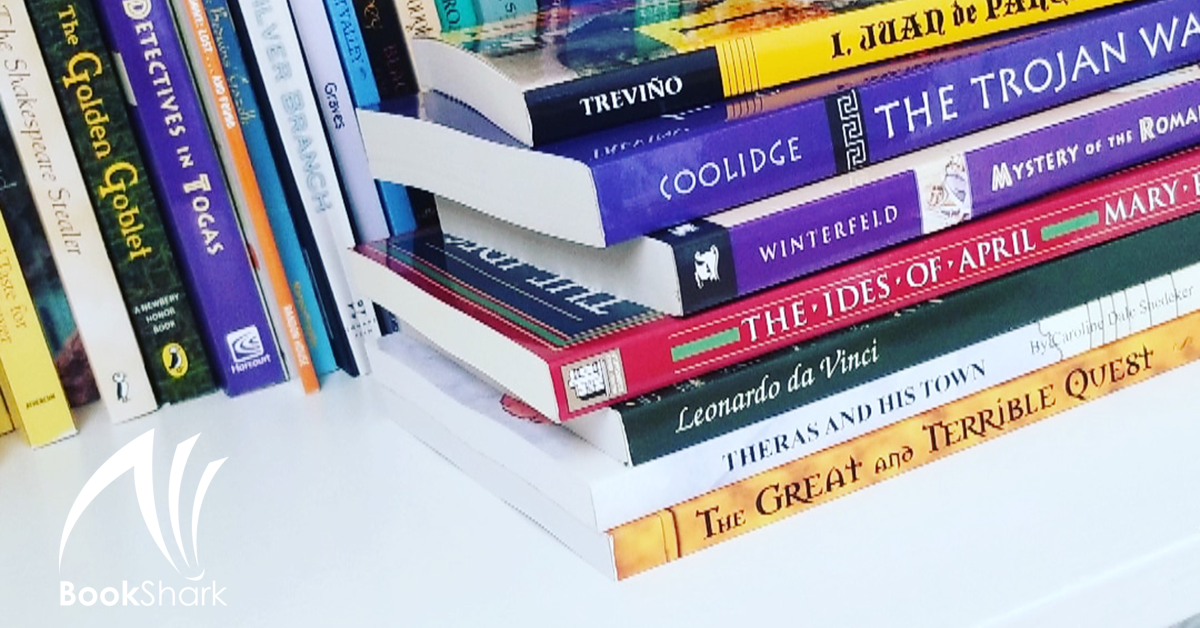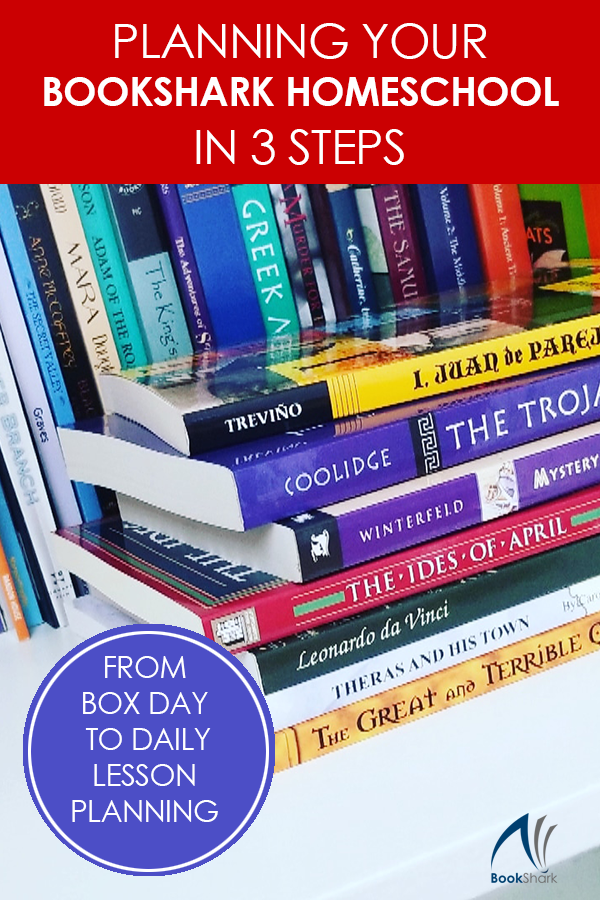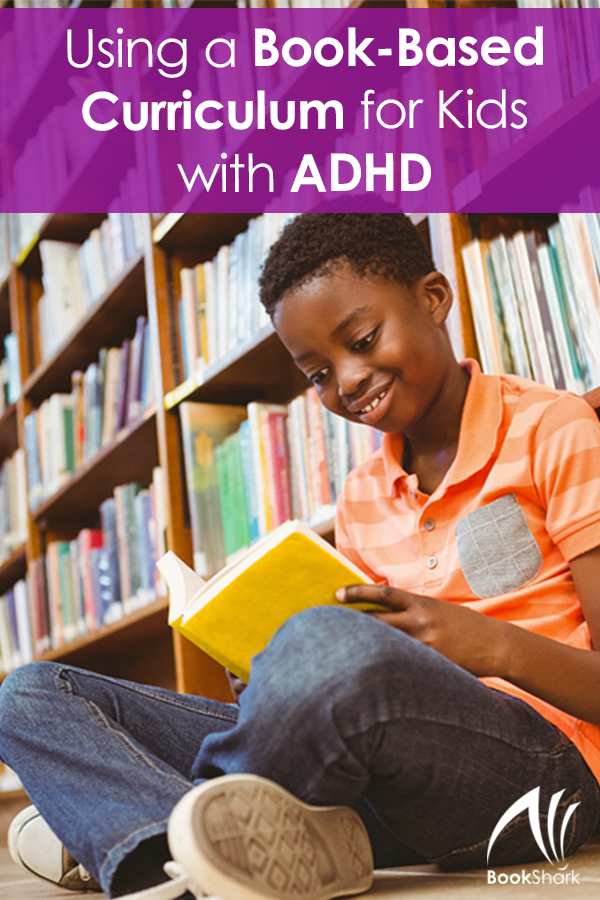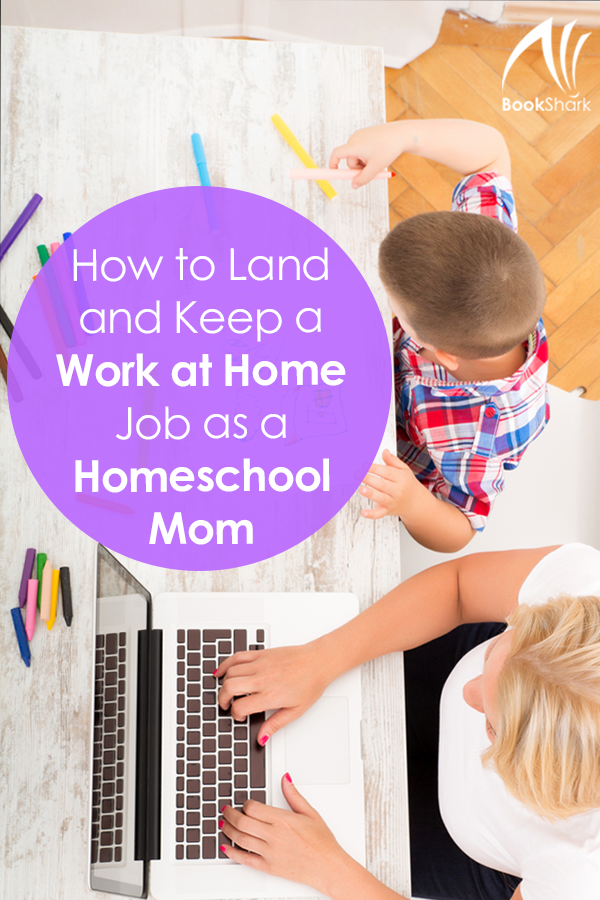Meet Your Child Where They Are: Customizing BookShark for the Perfect Fit
My husband Joe and I decided to homeschool our children very early on in parenthood. We discovered BookShark right away – it was a perfect fit for our family. The prewritten weekly schedule was just the level of organization I wanted in a homeschool program – now I wouldn’t have to create everything from scratch! I ordered the Pre-K program three years ago, when my oldest was three, and I never looked back.
In what seemed like the blink of an eye my oldest daughter sailed through preschool and kindergarten. Her love for learning grew with each passing year. First grade was a big year for both of us. My daughter would be entering the elementary school years. And I would be teaching two separate grades of children, preschool and first grade, simultaneously.
I felt nervous, like I was entering uncharted territory. What if I couldn’t figure it out? Would I struggle to keep track of all the details, the books, all those critical thinking questions between two separate grade levels? Thankfully each level of Bookshark spans a three-year age range. I could always teach just one level over both their ages if I needed to simplify.
There was no need to worry! BookShark is designed to flex and fit with any schedule. By following a few simple steps:
- Customizing my curriculum
- Leaning on BookShark’s built-in tools for parent success
- Managing my time
- I have the ability to create an enriching homeschool schedule for my family, fostering a deep love of learning in the process.
- I was able to nurture the unique needs of each of my children.
Using Bookshark Assessments to My Advantage
BookShark has many tools to help parents succeed in finding the right level of curriculum for each student. These include:
- Reading assessments – lists of words for children to read, to determine their proper level of reader
- Language arts assessments – a sample weekly English lesson for children to complete
- Mathematics placement tests – Each math program offered by BookShark – Math-U-See, Singapore Math, Saxon Math, and Rightstart – has its own placement test. Not only did these tests help me figure out the best level for my children, but they were invaluable in choosing which math program would be best for our family.

All of these tools are found on BookShark’s main website. They recommend that the level of reading a child uses should match their language arts level. This helped me understand what level of education would be the best fit for each of my children.
It’s important to remember that these assessments are just a starting point for discovering the best level of math and English. Children are unique individuals. The knowledge they gain does not always follow a clear path or a straight line. My children progress slowly in some areas before shooting ahead rapidly. As an educator, sometimes I just have to hang on for the ride.
Case in point: seven weeks into first grade my oldest was identified as being highly gifted. At the beginning of the year, she could only read basic words and phrases. She tested into first grade, which was the appropriate grade for her then. Eight weeks later she was reading third-grade chapter books. She had completed two math workbooks. She will likely finish second grade mathematics within the next month or two and first grade by December.
Don’t Be Afraid to Customize the BookShark Experience
My experience with my oldest daughter’s learning journey taught me a valuable lesson: feel free to modify the homeschool journey. Sure, I just purchased first grade two months ago. My youngest can still use those materials when she gets older. Right now, Level C with third grade readers and language arts is best for my oldest daughter. I could stick my head in the sand and keep her at her current level, but why hold her back?
She is progressing quickly. That’s how her brain is wired. As her teacher and her mother, I owe it to my daughter to support her in the best way possible. If my child needs more advanced readers then I will give them to her. BookShark gives me the flexibility to modify the difficulty of each school level up or down based on child ability. This flexibility is my favorite part of the curriculum.
It’s All About Time Management
Before I began teaching two levels I took the time to get organized. Organization is key for success in homeschooling, especially if you’re managing a household while you teach. I take my children to four activities and two play dates each week. I cook three meals a day from scratch. Ever since my husband was diagnosed with a thyroid disorder I have managed all of the housework, cared for our 37 birds and managed a good portion of the yard work and errands while he heals, and I owe it all to organization.
It doesn’t have to be fancy, but it does have to exist.
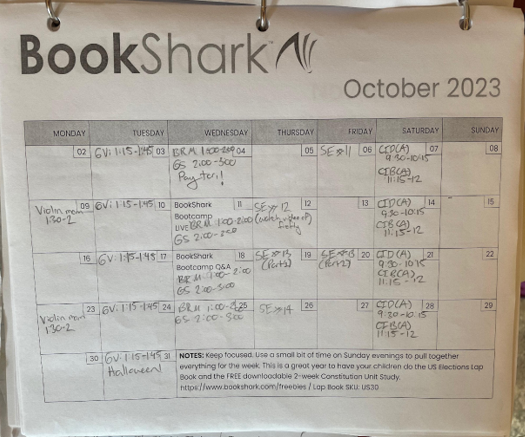
Lean on the BookShark Monthly Calendar
BookShark already makes life easy by providing parents with a printable calendar to organize your homeschool schedule. I use our calendar for all my daughters’ extracurricular activities and science experiments for the year. Before the year begins I flip through the science experiment books for each level and make sure:
- The experiments will fit with the weather over the year.
- We have all our materials and that they all work
- I have chosen a date each week that we are likely to have time for an experiment
Then I write it down in my calendar in pencil. Life happens. Sometimes I need to change things around. Pencil makes that easy.
Get a Day Planner
I’m not sure why but I found the concept of a day planner very intimidating. Before I began homeschooling two levels at once I made all sorts of excuses to not use one. Let me be clear, day planners are essential for homeschooling success, at least in our home.
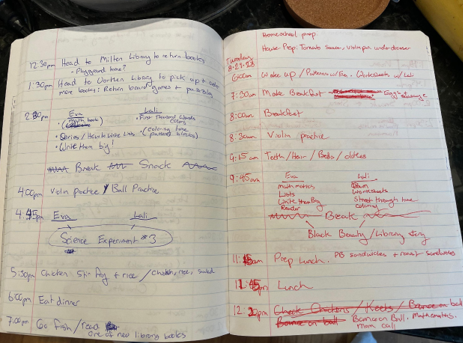
Once again, they don’t have to be fancy. I tried many printable planners. The best one was a plain, old wide rule composition notebook.
- At the top of the page I write the date and day of the week. Otherwise I forget what day it is. I also leave space for any house chores and homeschool prep that need to be completed that day.
- On each line I write down, roughly, the hours of the day from when I wake up to the time I go to bed. I plan what we will eat and when I need to start cooking. I write down where we need to drive that day and when we need to be in the car. I plan when my children will be practicing their electives and, roughly, when they will be in school.
- At school times I make two columns, one for each student. I alternate between work they can do more or less independently and work that needs more supervision from me. When one child is working on independent work, like math or spelling, I might be doing a read aloud with the other. Some activities, like history and science, we do together since my daughters draw different conclusions from the same project or read aloud.
My schedule is not set in stone. It is a guide. Sometimes life comes up. Spontaneous play dates happen. If something is not finished one day, I write it on tomorrows page of my notebook.
What this notebook does is take the stress off my memory. I don’t have to constantly remember everything I have to do in a day. I can reference my day planner any time, giving clarity to my thinking and allowing me to be more present with my children throughout the day.
Be Present in the Moment
Homeschooling multiple levels of children can be accomplished smoothly with the proper planning. Not only that, the entire experience can be fun and rewarding for everyone!
Every family’s homeschooling journey is different. Take each day one moment at a time. Most of all, don’t be afraid to customize the Bookshark experience!
I am a firm believer that by:
Listening to my children
Observing where they are in a given day
Fostering a love of learning
Using the tools available to me
I can handle anything.
BookShark has enabled me to optimize how I educate my children. I can customize each of my daughters’ school schedules and meet my children where they’re at, maximizing their homeschool experience.
For my family, homeschooling is an ever-evolving process. I need a curriculum that provides the flexibility to ebb and flow with life’s changes. BookShark’s ability to conform to our lives has allowed our family to maintain a high quality of education in constantly changing circumstances – adapting to every unknown – helping us grow in love, and strength, together.

About Our Author
I’m Bianca, a mom of many hats. Our homeschool journey began in 2020, in the Green Mountain State of Vermont. When we’re not enjoying the splendor of the countryside, my family is immersed in our literature-based curriculum and school 7 days a week, year round. With two highly gifted and competitive daughters we keep a rigorous schedule, but always make time for our friends and family.
You can usually find me in the homeschool room with a cup of apple tea, or shuttling my children to and from activities. I also operate a Facebook page, Northern Vermont Homeschoolers, to facilitate connection between the lovely homeschoolers of our great state. Read about our journey on my website Bianca’s Family.

